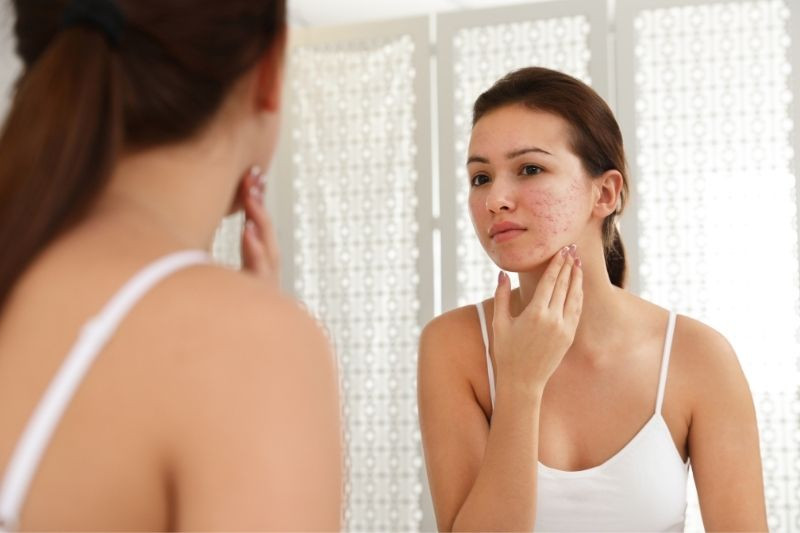If you’ve lived with painful, chronic acne for several years and haven’t seen improvement in your skin despite using skin-care products, then you likely have advanced acne. The main difference between regular acne and advanced acne is scarring and consistency. Check out our guide to common types of advanced acne below.
Rosacea
The first type of advanced acne we’ll examine is rosacea. Rosacea is a skin condition in which blood vessels beneath the facial skin break and create redness, swelling, and texturized skin spots. People often use the term “rosacea” interchangeably to describe redness, but rosacea is a much more advanced skin disorder. When someone experiences rosacea, painful pus bumps and pimples will cause discomfort. Rosacea also commonly affects people’s cheeks, face, forehead, and under-eyes.
If you believe you may have rosacea, contact an esthetician or invest in a rosacea skin-care set to begin treating and managing this condition.
Cystic Acne
Cystic acne is a highly advanced, painful form of acne vulgaris, or common acne. When someone experiences cystic acne, the pimples become considerably more inflamed than standard pimples. This excessive inflammation often causes a noticeable amount of discomfort.
When you’re treating cystic acne, it’s important to note that these cysts often leave behind acne scars and other damages to the skin. If you suspect you have cystic acne, speak with a skin-care professional right away to prevent skin damage.
Acne Mechanica
This type of advanced acne happens as a result of heat and pressure. When heat, pressure, and excessive friction combine and affect sensitive areas of the skin, these regions are likely to break out with acne. Although this condition occurs most commonly on the face, acne mechanica may develop anywhere.
Acne mechanica is more likely to happen to people who exercise in tighter fabrics or play sports. Consider preventing these breakouts by wearing softer materials and limiting the amount of heat, friction, and pressure you apply to sensitive areas of the skin.
Acne Cosmetica
The last type of advanced acne we’ll review is acne cosmetica. These breakouts occur as a result of comedogenic, irritating makeup formulas. Other cosmetic products such as hair shampoos, conditioners, or masks can also create acne cosmetica breakouts. If you notice chronic breakouts while using a particular makeup, hair-care, or cosmetics product, consider throwing away the product and opting for gentler formulas.
We hope our guide to common types of advanced acne has been a beneficial resource. If you believe you have any of these conditions, speaking with a skin-care professional right away is imperative. To learn more about acne disorders, treatments, and advice, browse the Jil Goorman Beauty website.

